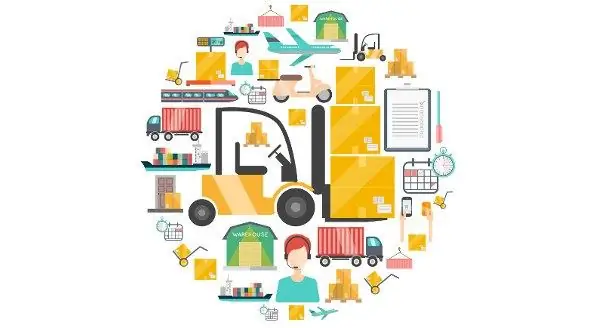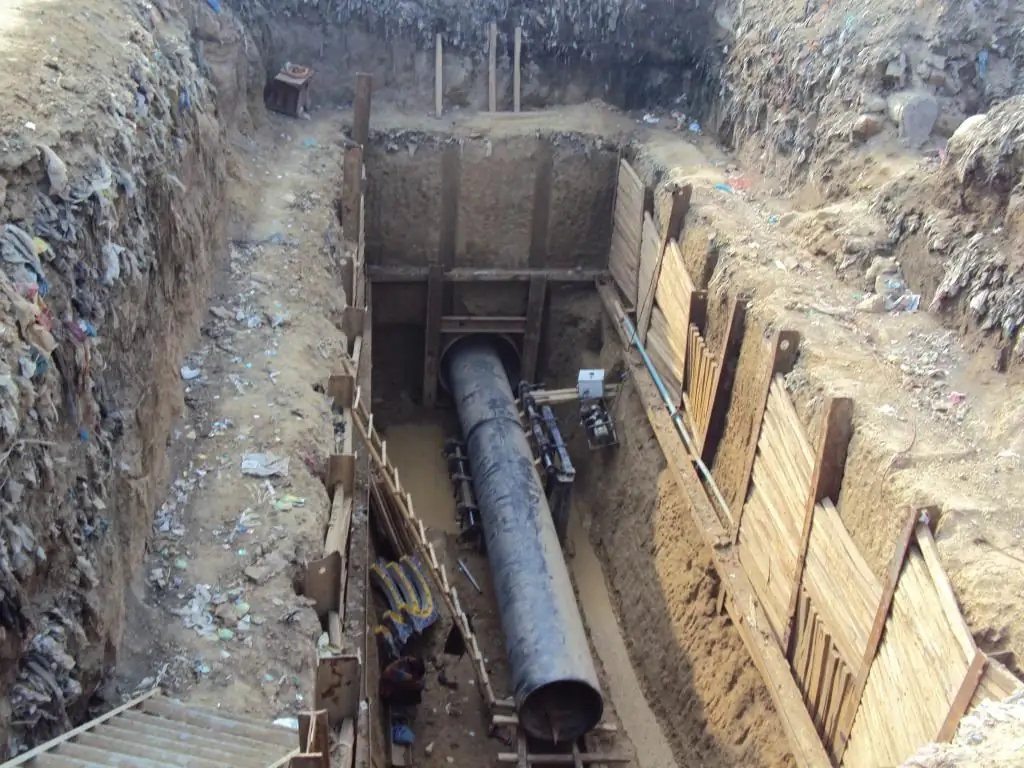2025 Author: Howard Calhoun | [email protected]. Last modified: 2025-01-24 13:10:43
With the need to combat pests, people faced at the dawn of their agricultural activities. With the development of crop production - an increase in the area of arable land, the emergence of monocultures, etc. - this problem began to become increasingly important. To get large yields, farmers had to use special means - pesticides. The classification of such compositions can be made according to various criteria. There are many varieties of such drugs.
Definition
Pesticides are any means intended to protect plants. Pestis is Latin for "contagion" and caedo means "to kill". Previously, such funds were called simply pesticides in our country. Today in Russia, it is the generally accepted name “pesticides” that is generally accepted in the world. Some types of such drugs can be used not only to protect plants, but also animals, and sometimes humans.

Systematic usesuch means for the protection of agricultural crops from various kinds of insects, microorganisms, etc. began in the 19th century. In 1939, Dr. P. Müller discovered the special insecticidal properties of dichlorodiphenyltrichloromethylmethane (DDT). This has become a real revolution in the protection of plants from insects. Later, other chlorine-containing pesticides were developed, as well as phosphorus-based products. The third generation of such compounds was synthetic pyrethroids, azoles, etc. And of course, after the invention of a large number of varieties of such agents, among other things, a classification of pesticides by chemical composition and other features was developed.
Varieties
Currently used plant protection products can be divided into groups according to the following characteristics:
- by chemical composition;
- according to the mechanism of action;
- by way of application;
- as intended.
There is also a hygienic classification of pesticides.
Differences in chemical composition
Crop protection products can currently be used:
- organochlorine;
- sulphur-based;
- organophosphorus;
- based on carbamates, etc.
The classification of pesticides by chemical structure is convenient, among other things, because it makes it easy to select the means of a particular purpose that are most suitable forthis particular situation. However, each such preparation within the group still has its own characteristics and may differ from the “related” ones in terms of the strength of the toxic effect on pests or even the direction.

Hygienic classification
Production of chemically pure preparations intended for plant protection is very expensive. Therefore, most pesticides contain various kinds of additives. When using such plant protection products, it should be borne in mind, among other things, that some of these impurities can be even more toxic than their active substance.
You need to choose such funds taking into account the possible harm to farm animals, fish in rivers and lakes located near cultivated fields, or humans. The toxicity classification of pesticides has been developed as follows:
- potent poisonous - LD50 up to 50 mg/kg;
- highly toxic - LD50 50-200 mg/kg;
- medium toxic - LD50 200-1000 mg/kg;
- low toxicity - LD50 over 1000 mg/kg.
Also, all these drugs are divided according to the degree of resistance to:
- very stable with a decomposition period of more than 2 years;
- persistent - 0.5-1 year;
- moderately resistant - 1-6 mo;
- unstable - 1 month
Another hygienic feature by which pesticides are classified isdegree of their accumulation in living organisms. In this regard, there are means that can cause:
- overcumulation (factor less than 1);
- pronounced cumulation (from 1 to 3);
- moderate (3-5);
- weak (more than 5).
Thus, the most dangerous for farm animals will be a highly potent poisonous pesticide with overaccumulation, very stable.

Classification by purpose
Crops can be damaged by different types of pests. Special preparations have been developed against each of them. Accordingly, there is also a classification of pesticides according to the objects of application. There are currently more than 30 groups of such drugs for their intended purpose. But the most popular types of pesticides are still:
- aficides - designed to fight aphids;
- acaricides - used against ticks;
- bactericides - destroying bacteria;
- herbicides - designed to control weeds;
- zoocides - used to kill harmful animals such as rats or moles;
- insecticides - used to control harmful insects;
- fungicides - used to kill microorganisms, etc.
Classification of pesticides by mechanism of action
To penetrate the body of harmful insects, such means can be differentways. In this regard, drugs are distinguished:
- intestinal - kill insects when they enter the gastrointestinal tract;
- fumigants - kill pests when they enter the body through the respiratory system.
According to the mechanism of action, contact and systemic pesticides are distinguished. The first type of preparation covers parts of agricultural crops with a thin film. The death of insects occurs due to direct contact with them. Systemic pesticides penetrate plant tissues and subsequently move through their parts.
According to the nature of the impact on pathogens, such drugs are divided into protective (prophylactic) and therapeutic. There is also a separate classification according to the mechanism of action of herbicides. Such drugs can be selective or continuous action. The first type of herbicide destroys only a particular type of weed. Continuous agents kill all vegetation on the field.

Applications
Classification of pesticides can, of course, be done according to the method of use. These drugs are available on the market in different forms. Pests can be destroyed by:
- pollination;
- spraying;
- fumigation (smoke);
- introduction into the soil;
- sprinkling on the surface of the soil.
Also, pesticides are often included in baits. Some types of pesticides can be used in solutions. Tofor example, crop planting material is often processed in this way.
What harm can they do to the environment
The chemical composition, methods of application, purpose and mechanism of action are the main features by which pesticides can be classified. The use of pesticides is certainly a necessary thing. But still, of course, you need to use such funds as carefully as possible.
Practically all pesticides used today are toxic substances. And of course, they can harm the environment. Such products pollute:
- atmosphere;
- hydrosphere;
- soil;
- biosphere.
Such drugs can harm all living organisms. First of all, fish in reservoirs suffer from them. According to statistics, from 30 to 70% of all pesticides used in the fields, unfortunately, end up in water bodies. Also, these substances cause great harm to birds and mammals. In them, they cause shifts in hematological parameters. In addition, these drugs act on birds as immunosuppressants. In some cases, pesticides are even capable of disrupting the individual or flocking behavior of birds and mammals.

Influence on a person
The classification of pesticides according to the degree of toxicity was considered by us above. Even the most harmless substances of this group contain, albeit in small quantities, toxic substances. Of course, with the development of science, pesticidesare becoming less harmful to humans. However, modern means of this variety cannot be called absolutely safe, unfortunately. In addition, pesticides applied to the fields 20 or more years ago still remain in the soil and water. Therefore, cases of pesticide poisoning are unfortunately possible these days.
Toxic chemicals can accumulate:
- in plant tissues;
- in fruits;
- in meat of poultry and farm animals.
At the same time, they enter the human body not only with food or water, but simply from the air. Such substances can cause significant harm to people. First of all, they cause disturbances in the functioning of the nervous system. Also, such compounds can destroy the metabolic process and slow down cellular metabolism. Unfortunately, some of these drugs can also negatively affect the production of hormones in the human body.

It is believed that the most devastating effects of pesticides are experienced by unborn children. Even at low concentrations, such substances freely cross the placenta.
Eco-farming
Pesticides thus cause significant harm to humans. However, farmers cannot yet refuse their use. There is currently no serious alternative to pesticides for the destruction of harmful insects and microorganisms. Without them, growing various kinds of crops can become extremely inefficient.

The only method that currently has high hopes in terms of reducing the harmful effects of pesticides on the human body is organic farming. When using this technology, the plants themselves can be used to repel pests. For example, next to onions, adherents of this technique often plant calendula. This plant repels the onion fly. At the same time, it is unpretentious and does not take too many nutrients from the earth.
Recommended:
Logistics costs - what is it? Classification, types and methods for calculating enterprise costs

The production activity of enterprises and firms is a complex process. It consists of different stages. This, for example, the creation, storage, distribution, transportation of goods. Each of these links in the commodity-production chain is associated with a number of difficulties, risks and costs. As a rule, they need to be expressed in monetary terms. The resulting figures are called logistics costs
Analysis techniques: classification, methods and methods, scope

Today, among the analytical tools of business, a magnificent collection of methods and techniques of economic analysis has gathered. They differ in goals, grouping options, mathematical nature, timing, and other criteria. Consider the techniques of economic analysis in the article
Heptyl rocket fuel: properties, characteristics, danger to humans, application

With the advent of such a direction of human activity as rocket and space research, the question of ensuring its environmental safety arose. And the main problematic link in this area was the safety of rocket fuel (heptyl) of the direct process of launching rockets and space technology into orbit. On the second question, the problems of ecological safety for the planet's biosphere are vague and distant. But as for the toxicity of heptyl rocket fuel, there are no more questions
Main types and types of business plans, their classification, structure and application in practice

Each business plan is unique, because it is developed for certain specific conditions. But you need to familiarize yourself with the features of various types of business plans in order to understand their key features. Experts recommend doing this before compiling your own similar document
Laying communications: types, classification, methods and methods of laying, purpose of communications

Laying communications is one of the most important stages in the construction, for example, of a new residential building. To date, there are a large number of the most diverse ways of installing communications. Their features, as well as advantages and disadvantages, have led to the fact that an individual method is selected for each case

